Abstract
A new method of extracting information about bacterial speeds from photon correlation spectroscopy is presented. This method has the advantage that an estimation of the translational speed distribution is directly varied so as to achieve a best least-squares fit to the experimental autocorrelation function. The theory of spline approximations to continuous functions is briefly outlined. The importance of the previously disregarded diffusional component of bacterial motion is discussed. Experimental data from Salmonella at a low scattering angle is analyzed by this method of spline approximation and the distribution of translational speeds is obtained.
Full text
PDF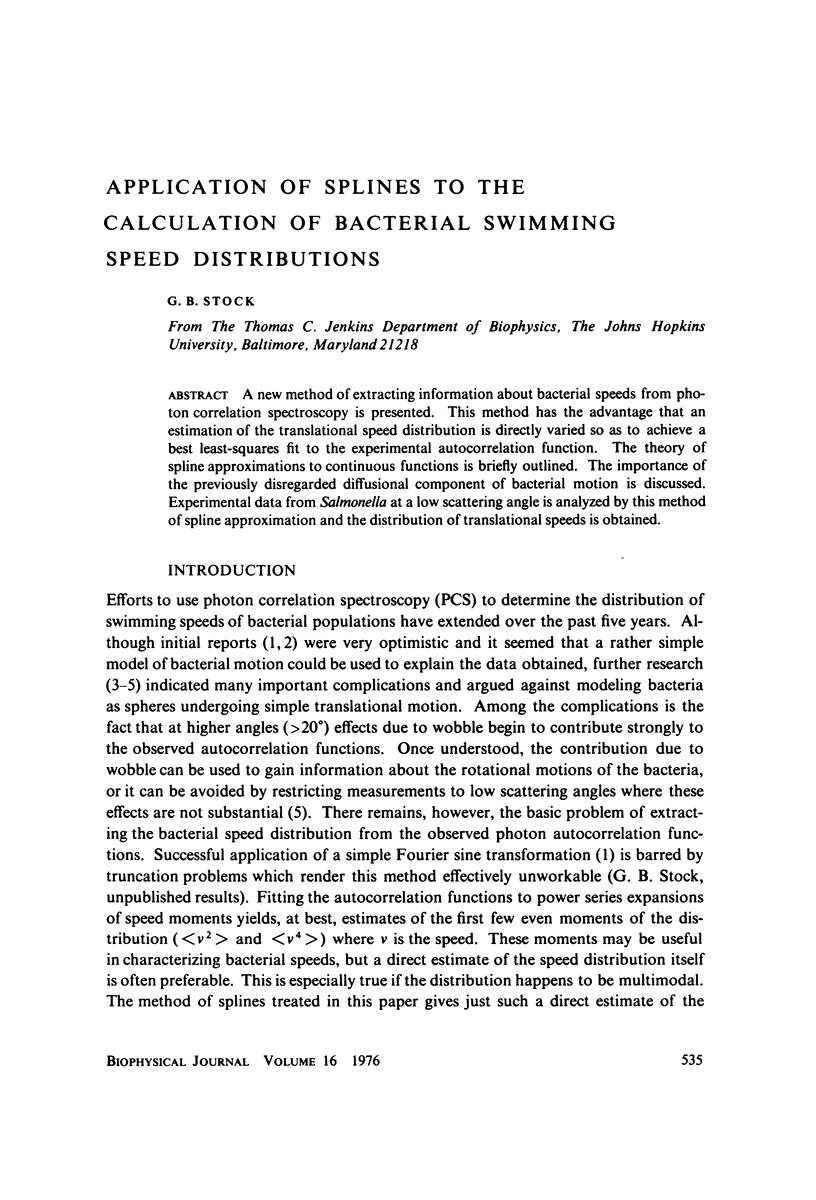

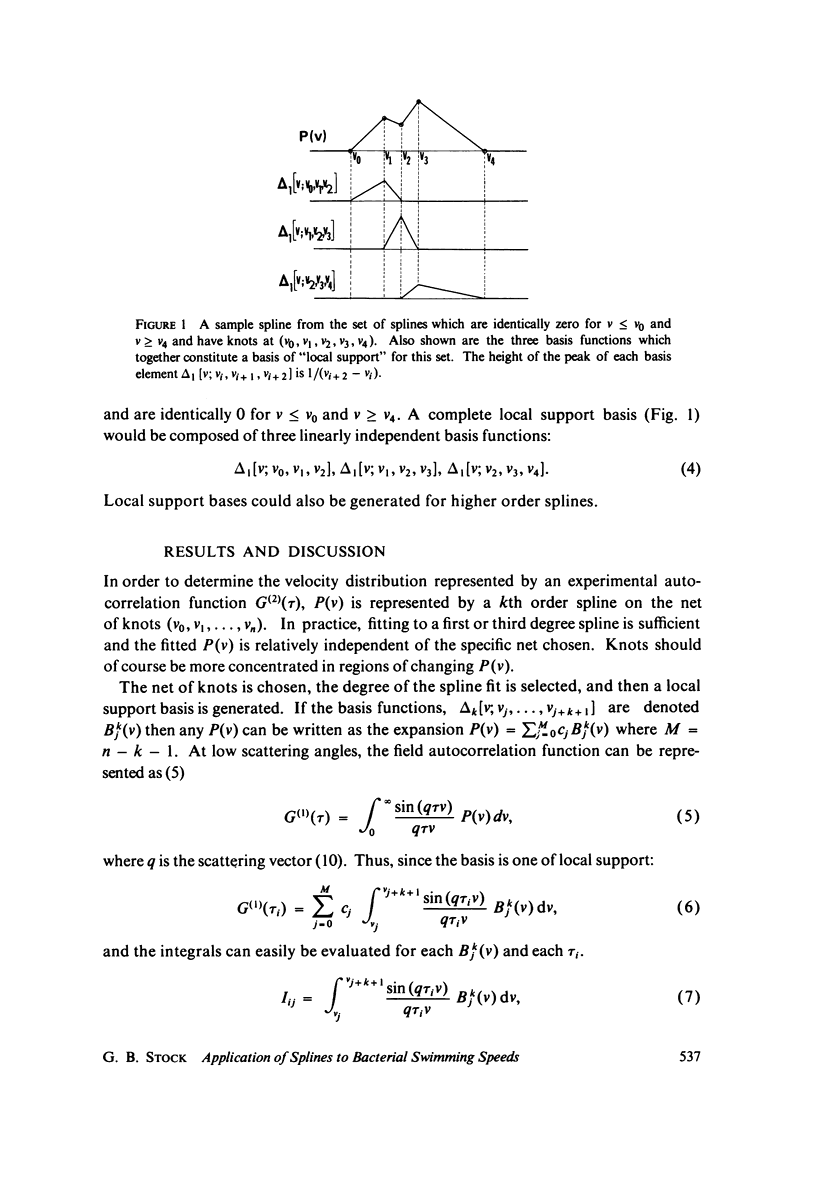
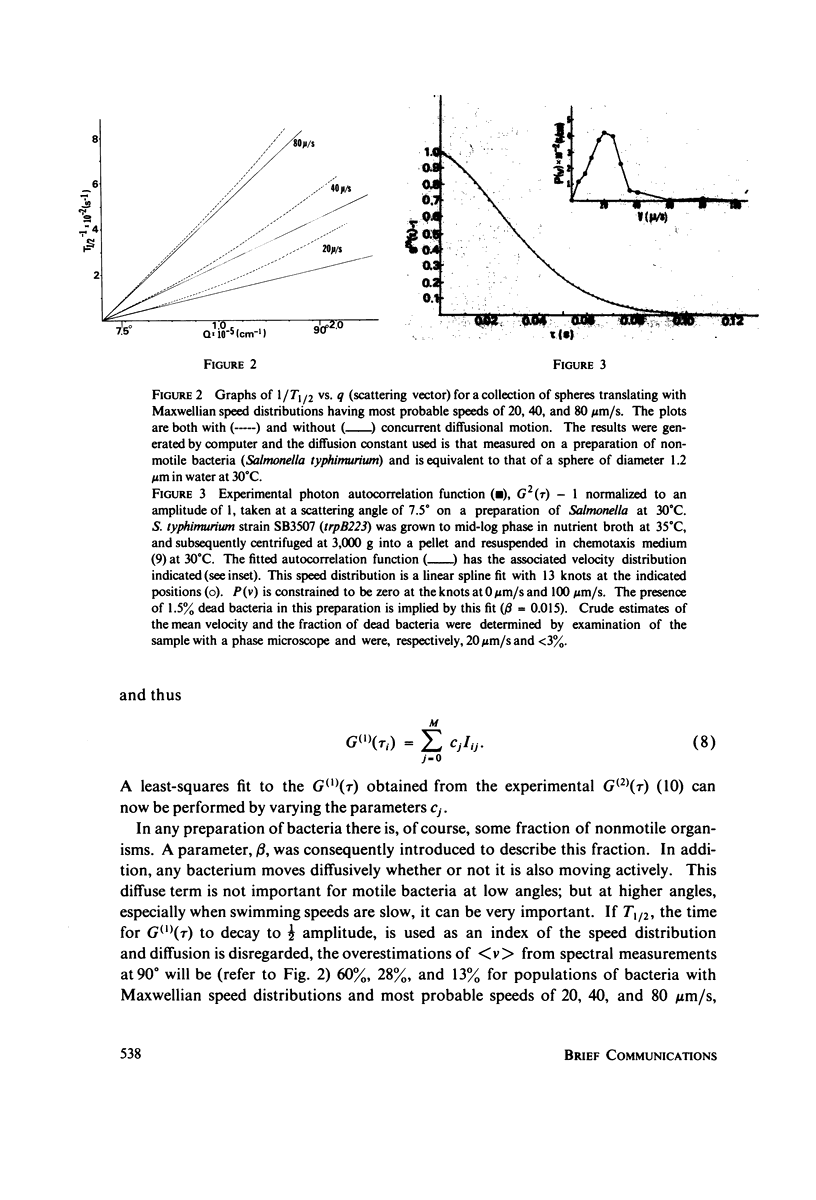
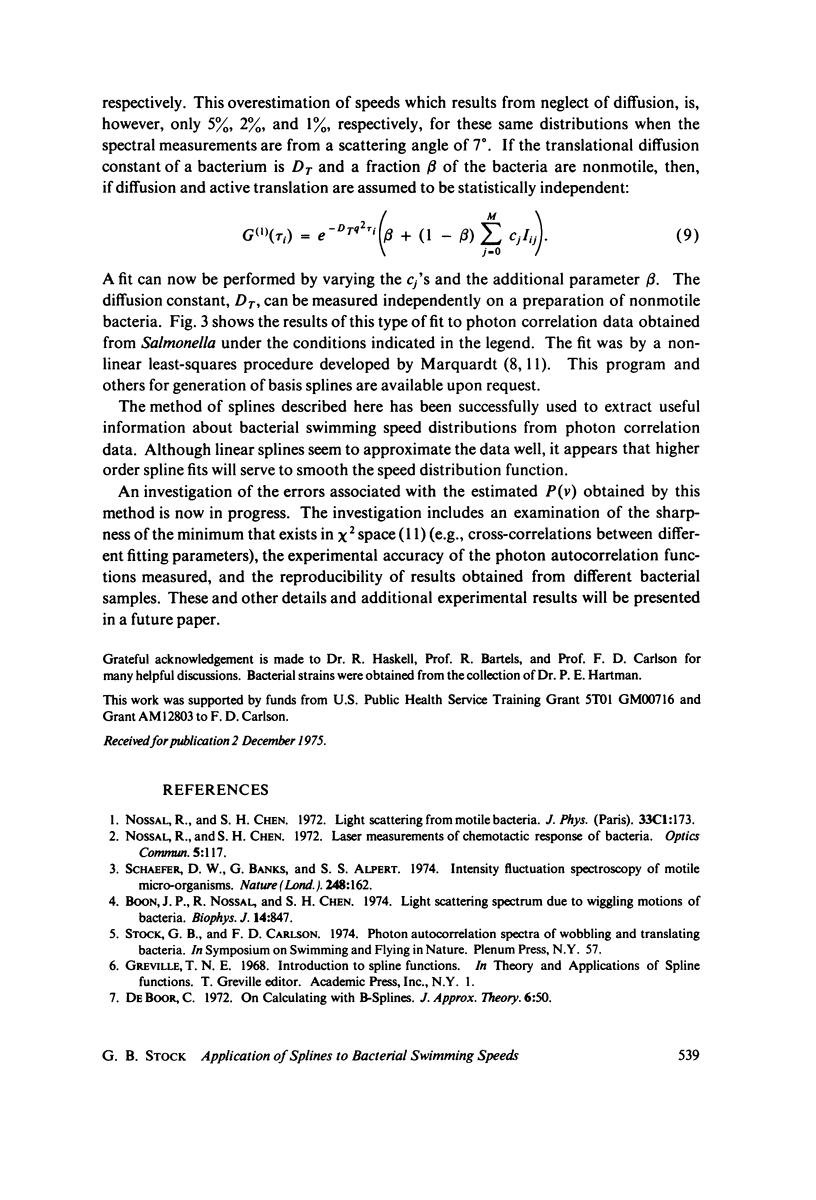
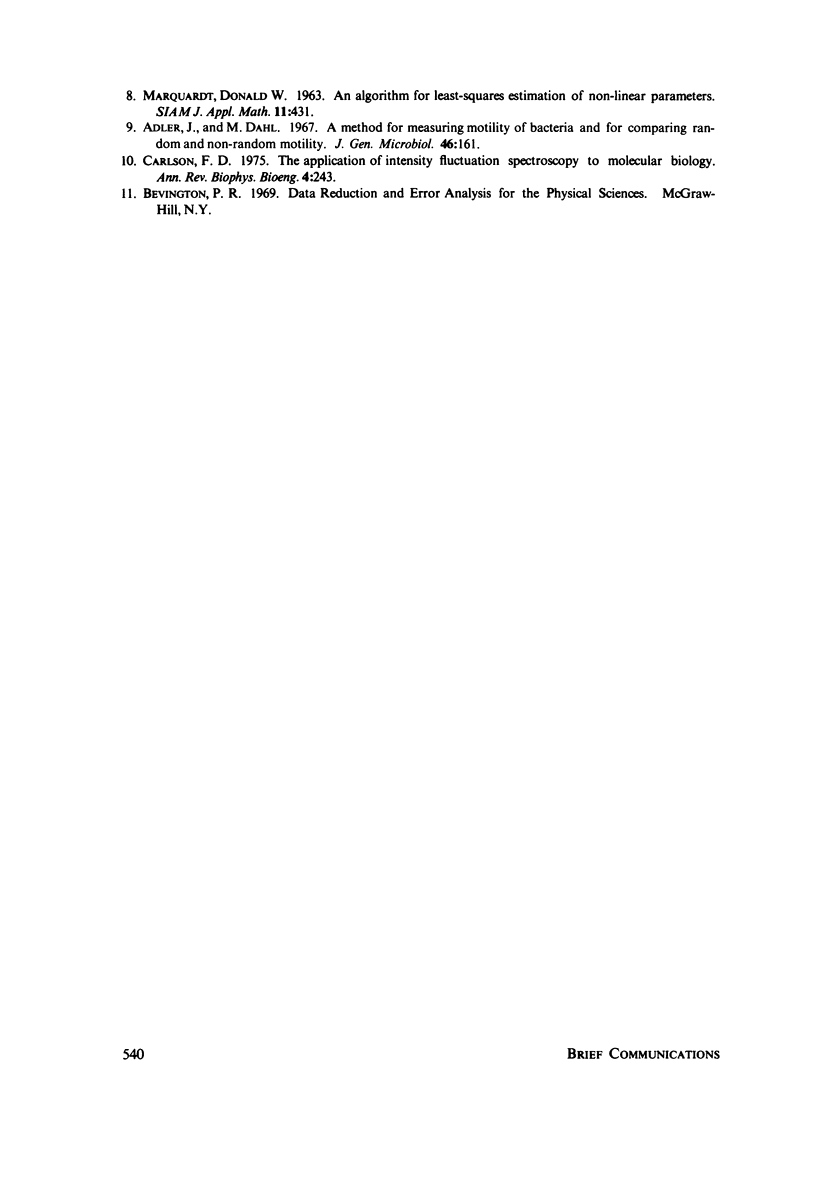
Selected References
These references are in PubMed. This may not be the complete list of references from this article.
- Adler J., Dahl M. M. A method for measuring the motility of bacteria and for comparing random and non-random motility. J Gen Microbiol. 1967 Feb;46(2):161–173. doi: 10.1099/00221287-46-2-161. [DOI] [PubMed] [Google Scholar]
- Boon J. P., Nossal R., Chien S. H. Light-scattering spectrum due to wiggling motions of bacteria. Biophys J. 1974 Nov;14(11):847–864. doi: 10.1016/s0006-3495(74)85954-0. [DOI] [PMC free article] [PubMed] [Google Scholar]
- Carlson F. D. The application of intensity fluctuation spectroscopy to molecular biology. Annu Rev Biophys Bioeng. 1975;4(00):243–264. doi: 10.1146/annurev.bb.04.060175.001331. [DOI] [PubMed] [Google Scholar]
- Schaefer D. W., Banks G., Alpert S. S. Intensity fluctuation spectroscopy of motile microorganisms. Nature. 1974 Mar 8;248(5444):162–164. doi: 10.1038/248162a0. [DOI] [PubMed] [Google Scholar]


